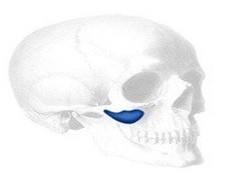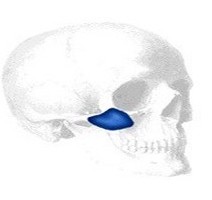The cheek or the midface region plays an important role in facial appearance. As one of the five facial bony prominences (brow, nose, chin, and jaw angles are the others), it is actually the most complex. It lacks any sharp angles, is made up of several bones that intersect together and is surrounded by three distinctly different soft tissue regions. While everyone appreciates that a high and strong cheekbone is desireable, it is not easy to quantitate what that should look like unlike chin projection or jaw angle width which can be actually be measured.
Rather than some absolute number, the cheek region is better recognized for what it does for facial shape and width. As part of understanding cheek morphology, one should not forget how the soft tissue below it affects how the bone looks above. Known as the submalar (below the cheek) region, it is affected by the size and prominence of the buccal fat pad. This golf ball-sized fat collection can be surprisingly large and it helps make for a rounder and fuller cheek region appearance. If the buccal fat pad is very large, it can make this area protrude or be quite ‘cheeky’. If this and other facial areas are small or atrophic, the facial shape may assume a more gaunt appearance.

The uniqueness of each person’s face and their desired cosmetic outcome must be taken into consideration when planning changes in this area. Removal, or more accurately, reduction of the buccal fat pad (buccal lipectomy) is a surgically simple procedure but it’s decision to do so is more aesthetically complex. Through a very small incision inside the mouth opposite the maxillary first or second molars, the buccal fat pad can be gently teased out. When doing at the same time as some type of midfacial implant, it can be done through the same incision. How much one removes is a matter of judgment. As a general rule, it is not a good idea to try and remove all of it. Not only may that be undesireable in facial appearance in the long-term, but there are several buccal branches of the facial nerve which interlace with the multi-lobed buccal fat pad. They exist most commonly on the superficial (outer) aspect of the buccal lobe, away from the area of intraoral manipulation. For this reason, aggressive buccal lipectomies may inadvertently damage these branches. I have never observedfacial nerve injury from a buccal lipectomy procedure but this attests to a more conservative resection philosophy. In uncommon cases with a very full and ‘fat’ face, a more complete buccal lipectomy may be justified. Such an approach works well when ‘fat-reducing or facial thinning’ procedures are being done such as neck liposuction and/or chin or cheek implants.
Conversely, submalar augmentation rather than reduction may be needed to help fill out a thin or gaunt facial appearance. While initially developed for lifting sagging cheek tissues over ten years ago, the submalar implant is much more commonly used to add soft tissue fullness rather than a lifting effect. If the cheek prominence is adequate but the underlying submalar region is thin or ‘sucked inward’ (indented), than an isolated submalar implant may suffice. If the overall cheek (malar and submalar) is too flat or deficient, then a combined malar-submalar implant may be needed.
When considering cheek augmentation as part of an overall facial improvement plan, both the malar and submalar regions must be considered together. Between expanded submalar implant designs and buccal lipectomies, a more comprehensive approach with satisfying surgical results is now available.
Dr. Barry Eppley
Indianapolis, Indiana



